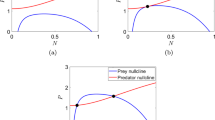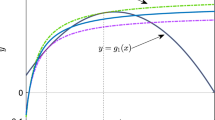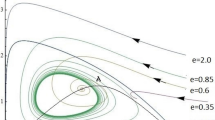Abstract.
General dynamic models of systems with two prey and one or two predators are considered. After rescaling the equations so that both prey have the same intrinsic rate of growth, it is shown that there exists a generalist predator that can mediate permanence if and only if there is a population density of a prey at which its per-capita growth rate is positive yet less than its competitor’s invasion rate. In particular, this result implies that if the outcome of competition between the prey is independent of initial conditions, then there exists a generalist predator that mediates permanence. On the other hand, if the outcome of competition is contingent upon initial conditions (i.e., the prey are bistable), then there may not exist a suitable generalist predator. For example, bistable prey modeled by the Ayala–Gilpin (θ-Logistic) equations can be stabilized if and only if θ<1 for one of the prey. It is also shown that two specialist predators always can mediate permanence between bistable prey by creating a repelling heteroclinic cycle consisting of fixed points and limit cycles.
Similar content being viewed by others
Author information
Authors and Affiliations
Additional information
Received 10 August 1996; received in revised form 21 March 1997
Rights and permissions
About this article
Cite this article
Schreiber, S. Generalist and specialist predators that mediate permanence in ecological communities. J Math Biol 36, 133–148 (1997). https://doi.org/10.1007/s002850050094
Issue Date:
DOI: https://doi.org/10.1007/s002850050094




